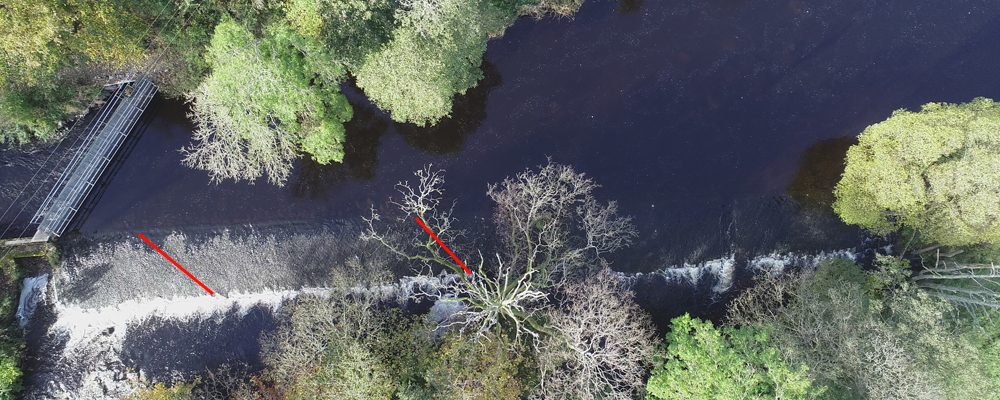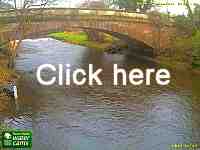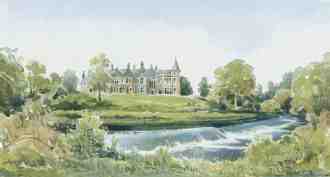
The approximate location of 2 timber baulks added to Skeldon dam is illustrated in red. These timbers should slow flows and deepen the water flowing over the dam on the upstream side of the baulk.
This week, simple timber baulks have been added to Skeldon Weir to improve fish passage over the dam particularly during low flows when depth may limit some fish in their ability to swim up the face of the obstacle or late in the season as hen fish near spawning and have limited energy left for migration.
Two sloping timber baulks were bolted to the face of the weir on the instruction of the CAR licence holder that operates the hydro scheme. This was a voluntary action that was supported by Ayrshire Rivers Trust. At a time when marine survival is so poor, it is important to ensure every single fish reaches their intended spawning grounds as quickly and unhindered as possible. While Skeldon Weir was never thought impassible to salmon and trout, every single weir in a river does have an impact on migration to some extent or other. Studies have shown that each weir may prevent a proportion of fish passing beyond, hence the support for these relatively minor improvements.
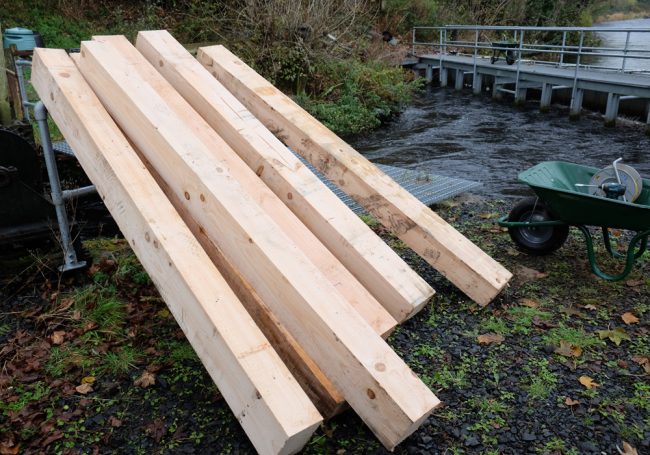
Untreated larch timbers were chosen as they should provide reasonable longevity and have no adverse impact on fish and freshwater ecology.
Additionally, due to concerns from anglers fishing the stretch downstream of the weir, that abstraction was impacting on their fishing, the developer has asked SEPA to vary his CAR license to reduce the amount of water he takes at the lower end of the scale in exchange for a small increase at the higher end of flow curve to compensate. ART agree that this may prove beneficial for angling and fish running in low water angling and shouldn’t impact on migration at the upper end of the scale.
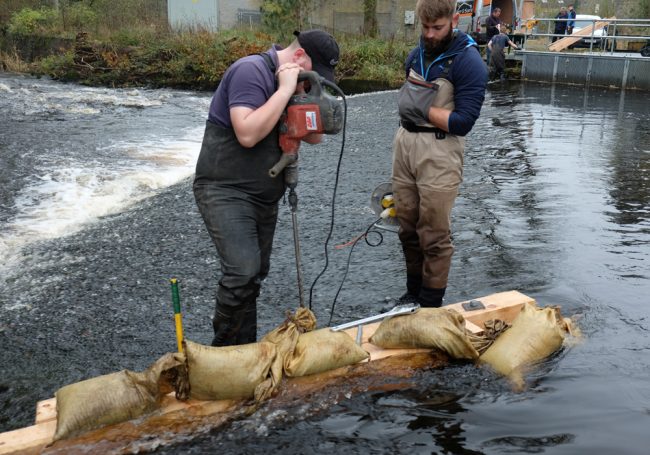
Installing the baulks on the dam
These alterations to abstraction regime (should SEPA approve them) and the addition of the timber baulks can only benefit fish migration. Whether they prove beneficial for angling will remain to be seen. ART will keep an eye on the new baulks and assess their efficacy and an impacts they might have. Ultimately, if they are not effective or problematic in any way, they can be easily removed.
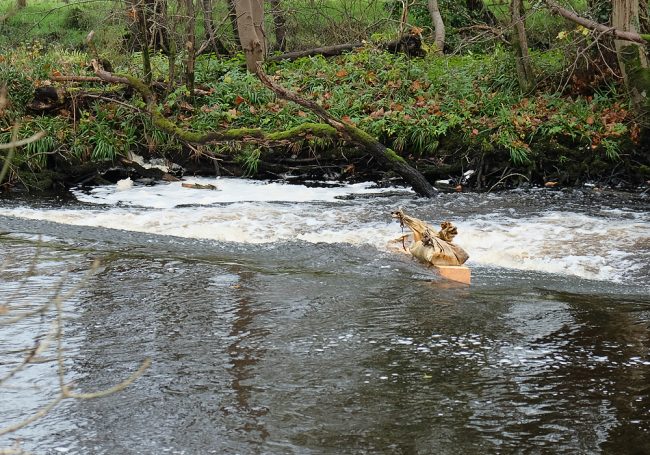
Almost completed and the effect of this baulk on the depth of water can be seen immediately to the left of the timber. There’s now adequate depth for a salmon to swim up the face of the weir with its back hardly breaking the surface.
One local resident was quick to condemn the baulks as unsightly, an obstruction to fish passage, damaging to wildlife and species using the area and a danger to Canoeists. Obviously, they don’t meet with everyone’s approval however, in terms of fish, ecology and canoeist, they should at worst have no impact or at best be beneficial. The timber will rapidly darken after just a couple or so weeks in the water. Time will tell. Readers will be able to judge for themselves.

